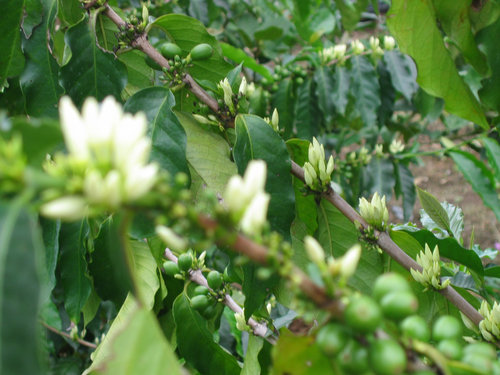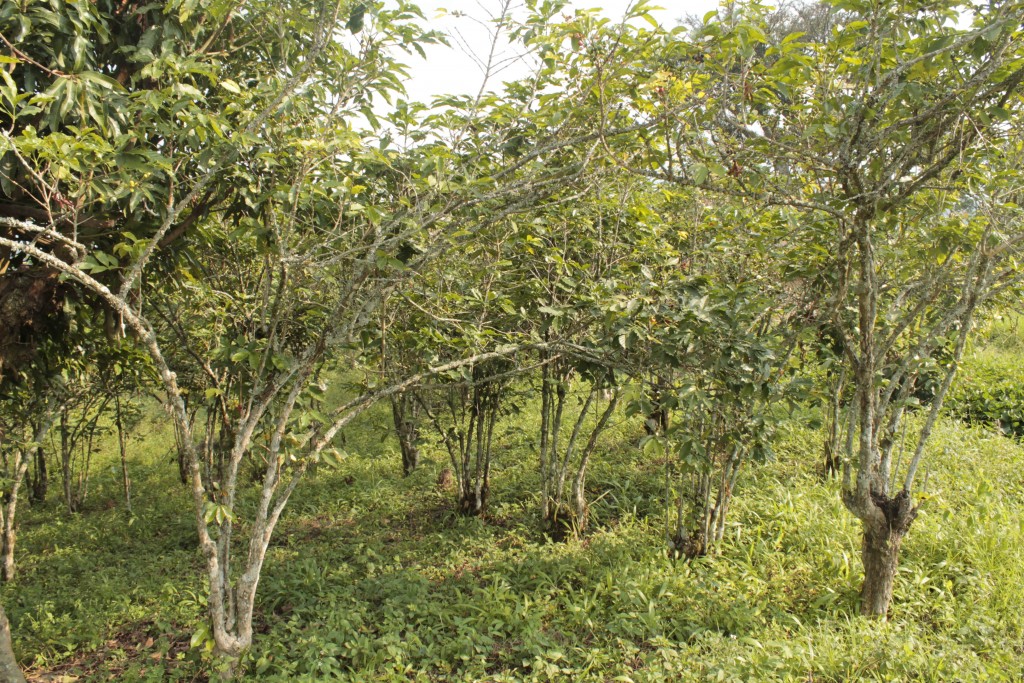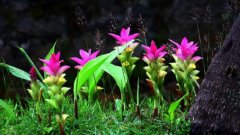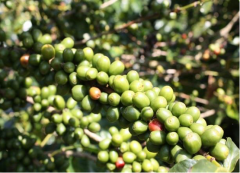Costa Rica-La Amistad Manor Coffee Flavor description and Baking suggestion
For professional baristas, please follow the coffee workshop (Wechat official account cafe_style)

Costa Rica-La Amistad Manor beans
The quality of coffee produced in Costa Rica is the most stable among Central American countries, because Costa Rican coffee grows in suitable climate and good shading conditions, coupled with fertile soil and stable middle and later treatment, in addition, organized coffee cooperatives are closely integrated with the national coffee policy, so that the reputation of Costa Rican coffee continues for years. At present, the treatment methods in Costa Rica are divided into two main streams: one is the traditional washing method and the other is the most popular honey treatment (Miel Process). The water treatment emphasizes that the taste is clear and clean and the acid dies like a razor, while the honey treatment emphasizes increasing the complexity and sweetness of coffee beans. The more well-known producing areas are Tarazu, Sanshui River, Central Valley and so on. However, encouraged by the coffee competition, more and more small and beautiful previously little-known estates gradually increase their popularity so that the world can taste a variety of coffee beans at different levels.
Located in the La Zhu region of Costa Rica, La Amistad Manor Bean (Friendship Manor) is an excellent manor for water washing. Coffee grows in privately owned nature reserves at an altitude of 1200 ~ 3100 meters. Amista Manor strives to protect the natural ecology. The nutrients and fertilizers for coffee come from the mixture of animal excrement and peel, pulp and fallen leaves removed by coffee. The growing process strictly abides by the organic standard raw beans have been certified by OCIA International Organic Agriculture improvement Association, and Taiwan has been certified as organic raw beans by the North District Agriculture and Food Administration (organic label number is 099-1064-00001).
Costa Rica La Amistad Manor beans, coffee raw beans smaller emerald green represents the slow growth of fresh coffee at high altitude.
La Amistad Manor beans in Costa Rica, defective beans are about 3% selected by hand, weight loss ratio of roasted to light roasted (city) coffee beans is 14%, empty shell beans and bad beans account for 2%, defective beans have the same appearance and color, and the sound of crisp baking during baking is less scurf and empty shell. La Amistad Manor beans are a clean, balanced and elegant Costa Rican coffee with no unnecessary flaw pollution.

Shallow baking end (City): you can use a steeper heating curve to increase the acidity (close to the acidity of grapefruit) to show a sharp side, or you can pick a gentle warming curve to make the acidity flat, which is a good shallow baking technique. Dry aroma is vanilla aroma after cooking to give out citrus aroma, citric acid is very sharp, not muddy, taste bright, clear and vibrant, aftertaste orange sweet light, this baking degree emphasizes the acidity clean and sharp side of Amista manor.
60 seconds after baking (Full City-): a touch of berry aroma and sweetness can be smelled when grinded. After brewing, it exudes a peculiar aroma of Assam tea. The color of coffee is as red as black tea, the taste is fresh and clean, and the finish is perfectly balanced with sweetness. This baking degree mainly reflects the balance between the aroma and sweetness in the aftertaste of Amista Manor.
Re-baking second burst start (Full City): light cheese aroma is particularly obvious when grinding beans, when the fruit acid has disappeared to replace the sweetness of crystal sugar, gentle, not thick to maintain a consistent clean taste, the floral aroma of chamomile is particularly pleasant in the aftertaste.
Important Notice :
前街咖啡 FrontStreet Coffee has moved to new addredd:
FrontStreet Coffee Address: 315,Donghua East Road,GuangZhou
Tel:020 38364473
- Prev

Nicaragua San Juan-Cocoa River (del Rio Coco) cooperative baking recommendations, flavor description
Professional barista exchanges please follow the coffee workshop (Wechat official account cafe_style) Nicaragua San Juan (San Juan) Cocoa River (del Rio Coco) cooperative coffee beans Nicaraguan coffee is not well-known in Taiwan in recent years, except for the traditional high-altitude typical tree species such as beans (M aragogype) and Java tree beans, ordinary coffee lovers seldom mention him.
- Next

El Salvador-Rainforest certified Unoka Manor Coffee Bean roasting advice, Flavor description
For the exchange of professional baristas, please follow the coffee workshop (Wechat official account cafe_style) Salvador-UNICAP Capitales Manor Bean Rain Forest Alliance (RFA) certification of coffee produced in El Salvador has attracted worldwide attention in recent years, which is the result of close cooperation between small coffee farmers and international coffee organizations (groups) that help improve farming and handling methods.
Related
- Does Rose Summer choose Blue, Green or Red? Detailed explanation of Rose Summer Coffee plots and Classification in Panamanian Jade Manor
- What is the difference between the origin, producing area, processing plant, cooperative and manor of coffee beans?
- How fine does the espresso powder fit? how to grind the espresso?
- Sca coffee roasting degree color card coffee roasting degree 8 roasting color values what do you mean?
- The practice of lattes: how to make lattes at home
- Introduction to Indonesian Fine Coffee beans-- Java Coffee producing area of Indonesian Arabica Coffee
- How much will the flavor of light and medium roasted rose summer be expressed? What baking level is rose summer suitable for?
- Introduction to the characteristics of washing, sun-drying or wet-planing coffee commonly used in Mantenin, Indonesia
- Price characteristics of Arabica Coffee Bean Starbucks introduction to Manning Coffee Bean Taste producing area Variety Manor
- What is the authentic Yega flavor? What are the flavor characteristics of the really excellent Yejasuffi coffee beans?

